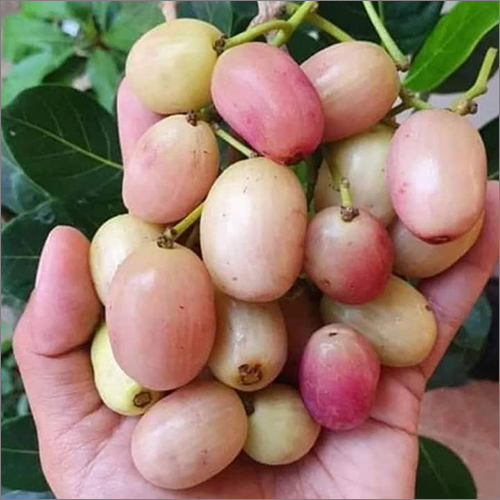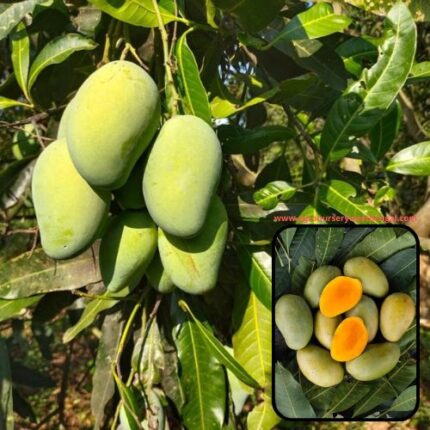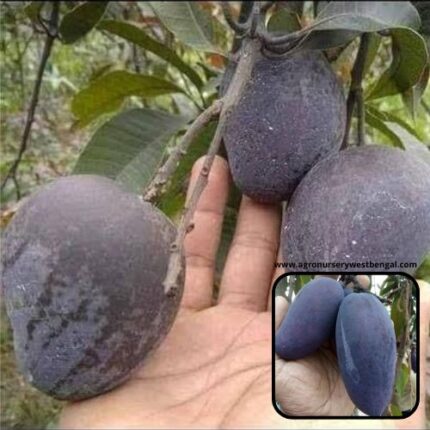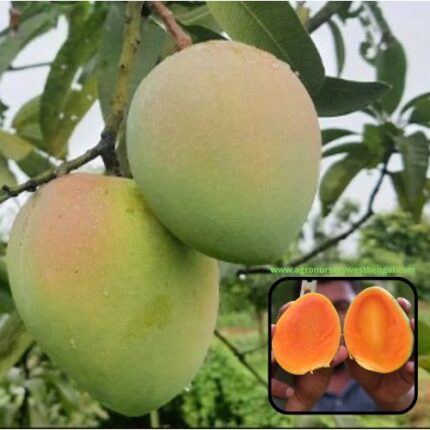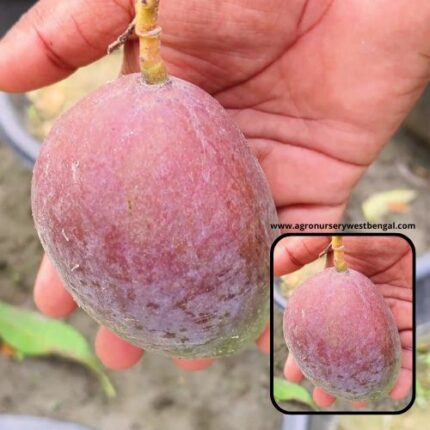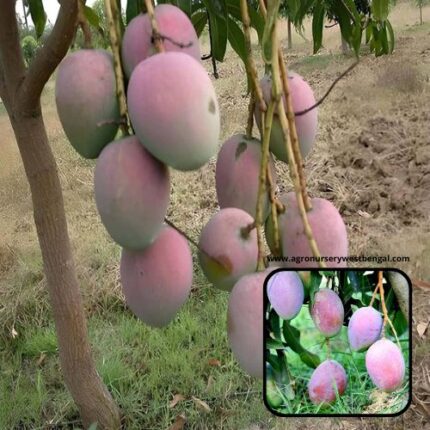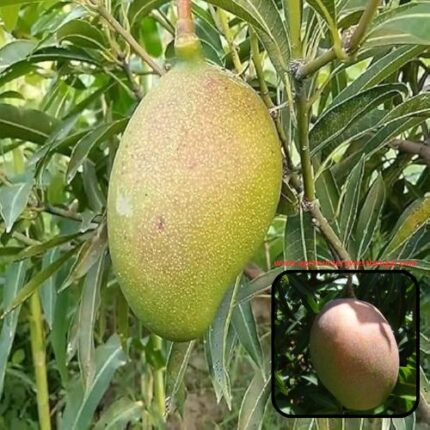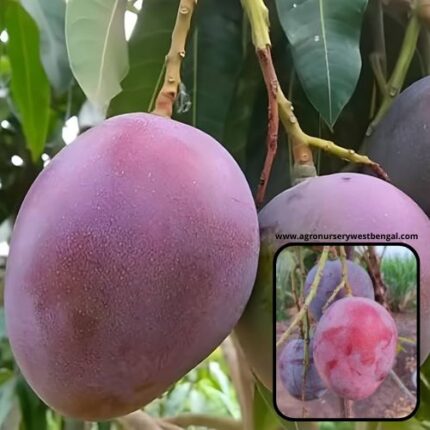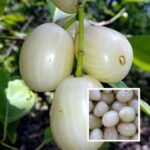
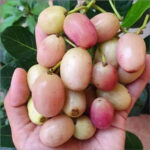
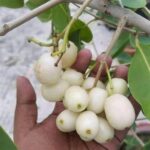
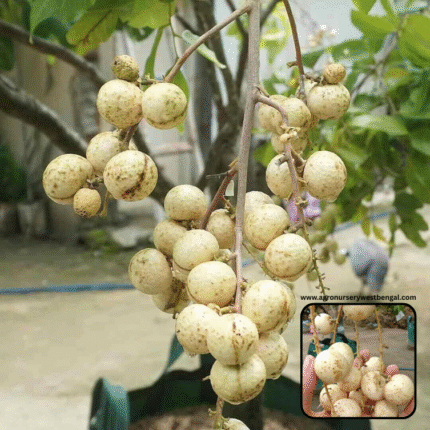
White longan fruit plants
₹2,599 Original price was: ₹2,599.₹1,899Current price is: ₹1,899.
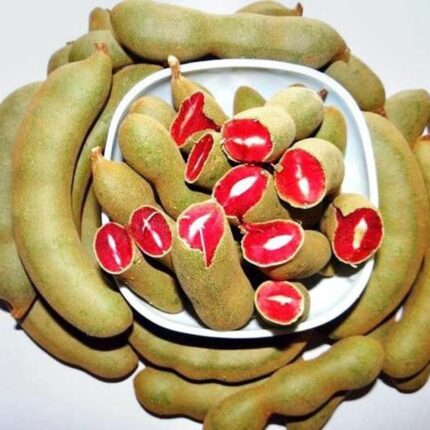
Red Imli fruit plants
₹899 Original price was: ₹899.₹549Current price is: ₹549.
Thai white Jamun fruit plants
₹869 Original price was: ₹869.₹439Current price is: ₹439.
Category: Fruit Plants
Description
“White Jamun” refers to a specific variety of the Jamun fruit, scientifically known as Syzygium cumini. While the more common Jamun is famous for its deep purple to almost black skin and purplish flesh, the white variant offers a distinct visual and taste experience.
Here’s a detailed description of White Jamun:
1. The Plant (Tree):
- Tree Type: Like its darker counterpart, the White Jamun tree is an evergreen tropical tree belonging to the Myrtaceae family. It can grow quite large, up to 30 meters (100 ft) tall, and can live for over 100 years.
- Foliage: It has dense, glossy dark green leaves, providing good shade.
- Flowers: The tree produces small, fragrant flowers, typically in March to April, which develop into fruits by May or June in its native regions.
2. The Fruit:
- Appearance:
- Skin: The most distinguishing characteristic is its skin color. Unlike the dark purple/black of regular Jamun, the white jamun fruit has a light, often whitish to very pale green, sometimes with hints of pink, waxy skin. As it ripens, it moves from green to these lighter hues.
- Shape: It’s typically oblong or ovoid, similar in shape to the traditional Jamun.
- Flesh: The flesh inside is translucent white or creamy white, providing a striking contrast to the usual dark purple flesh. It’s juicy and tender.
- Seeds: White Jamun usually contains a single seed, though some varieties can be nearly seedless.
- Taste and Flavor Profile:
- White Jamun is generally considered less astringent and less tart than the common dark Jamun.
- It offers a mildly sweet flavor, often with a subtle tanginess. Some describe its taste as a harmonious blend of sweetness and a delicate hint of sourness. It lacks the intense mouth-puckering quality that some find in darker Jamuns.
- Texture: The fruit is crisp, juicy, and refreshing, making it an excellent choice for fresh consumption, especially in hot climates.
3. Ripeness:
- The fruit ripens from late spring to early summer. When ripe, it turns its characteristic whitish/pale green color and feels slightly soft to the touch.
4. Culinary Uses:
- Fresh Eating: White Jamun is primarily enjoyed fresh, directly from the tree, often with a sprinkle of salt to enhance its flavor and reduce any lingering astringency.
- Beverages: Its juicy nature makes it suitable for fresh juices and refreshing drinks.
- Desserts: Can be incorporated into fruit salads, jams, jellies, and desserts.
- Traditional Uses: Like the common Jamun, it’s valued in traditional medicine systems like Ayurveda for its health benefits, particularly for managing blood sugar levels and aiding digestion.
5. Nutritional Value:
- White Jamun is low in calories and fat, but a good source of:
- Vitamin C: An important antioxidant.
- Dietary Fiber: Beneficial for digestive health.
- Minerals: Contains iron, calcium, and phosphorus.
- Antioxidants: Like other Jamun varieties, it contains beneficial phytochemicals and polyphenols.
Comparison with Black Jamun:
The main differences lie in color and taste:
- Color: White Jamun has a light, whitish-green skin and white flesh, while Black Jamun has dark purple to black skin and purplish flesh that stains the tongue.
- Taste: White Jamun is generally milder, less astringent, and less sour, with a more pronounced sweetness compared to Black Jamun’s characteristic sweet-sour-astringent combination.
Overall, White Jamun is a delightful and refreshing tropical fruit that offers a unique flavor profile and a lighter appearance compared to the more commonly known dark Jamun


